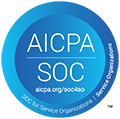Any employer who has dealt with legacy claims understands the financial strain it can cause. Does the term ‘creeping catastrophic claims’ resonate? When you look below the surface, there are a multitude of reasons for a workers’ compensation claim to stay open for an extended period of time. Inadequate training, inappropriate handling at the beginning of the claim, too many claims assigned to a single adjuster and claim handling by a TPA that no longer values your business are just a few of the reasons behind the increased financial burden of the ‘old dog’ claims. This article highlights and explains many of the reasons legacy claims drag on, and offers strategies that can intercept the downward spiral.
If you ask the third party administrator (TPA) adjuster why any particular claim is still open, the adjuster will recite the employee’s medical condition and possibly the industrial commission ruling on the particular claim.

